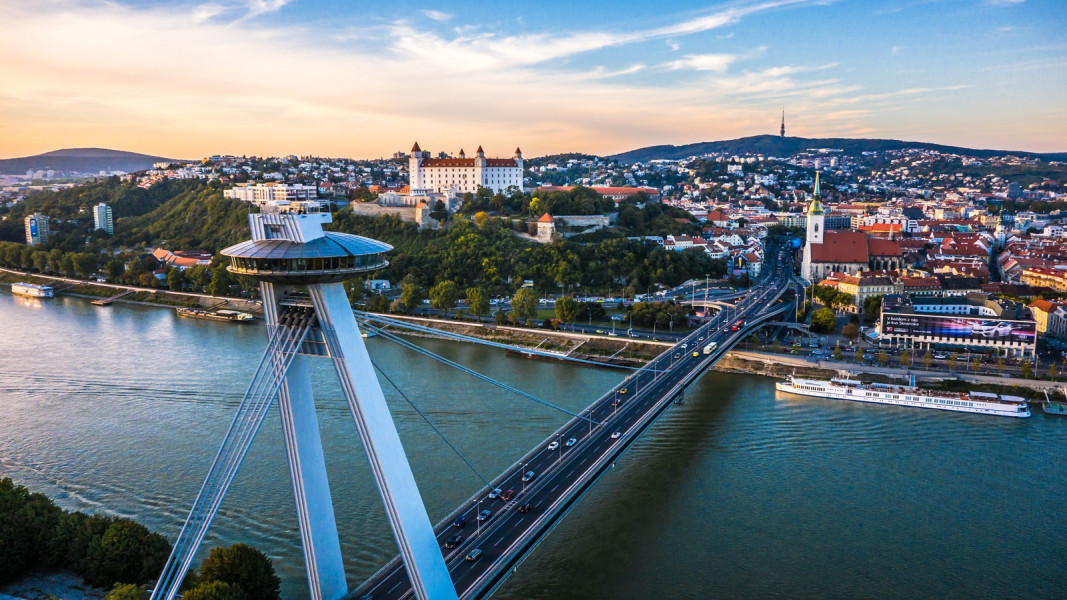Historical Information About Slovakian Union And Sovereignty

Historical Information About Slovakian Union And Sovereignty
Slovakia, officially known as the Slovak Republic (Slovak: Slovenská Republika), is a landlocked country situated in the eastern portion of Central Europe. Bordered by Poland to the north, Ukraine to the east, Hungary to the south, Austria to the southwest, and the Czech Republic to the northwest, Slovakia’s geographical position places it at the crossroads of various cultural and historical influences. The country covers an area of approximately 49,000 square kilometers (about 19,000 square miles) and is characterized by a predominantly mountainous landscape, which includes the stunning Carpathian Mountains. The population of Slovakia exceeds 5.6 million inhabitants, with Slovaks making up the majority of the demographic. The capital city is Bratislava, which is not only the largest city but also a vibrant cultural and political hub. The second-largest city, Košice, is known for its historical architecture and regional significance. Slovak is the official language of the country.
The history of Slovakia dates back to the arrival of the Slavs in the region during the fifth and sixth centuries. These early inhabitants played a crucial role in the establishment of Samo’s Empire in the seventh century, which marked one of the earliest forms of Slavic political organization in Central Europe. Following this period, the ninth century saw the rise of the Principality of Nitra, a significant Slavic state that laid the groundwork for future political entities in the area. However, this principality was later absorbed into the more expansive Principality of Moravia, which succeeded in unifying the Slavic territories.
By the tenth century, after the fragmentation of Great Moravia, the region was integrated into the burgeoning Principality of Hungary, which ultimately evolved into the Kingdom of Hungary in the year 1000. This incorporation had profound effects on the cultural and political landscape of Slovakia, as it became part of a larger kingdom that shaped its development for centuries to come. The Mongol invasion in 1241 and 1242 was a catastrophic event that devastated much of the territory. This incursion resulted in widespread destruction, but the area began to recover significantly under the leadership of Béla IV of Hungary. The king not only initiated reconstruction but also encouraged the settlement of German migrants, who became a significant ethnic group in Slovakia, particularly in the central and eastern regions.
Slovakia's Rich History Reflects And Diverse Influences That Have Shaped Its Culture, Language, And Society
Following the conclusion of World War I and the subsequent dissolution of the Austro-Hungarian Empire, the Czechoslovak National Council played a pivotal role in establishing Czechoslovakia as an independent state in 1918. This new nation brought together various ethnic groups, predominantly Czechs and Slovaks, under a common state structure. However, during World War II, a separate entity known as the First Slovak Republic emerged from 1939 to 1945. This republic was characterized by its extremist, clero-fundamentalist ideology and operated as a puppet state under Nazi Germany’s influence.
As World War II drew to a close, Czechoslovakia was reestablished as an independent nation, marking a significant moment in its history. However, this period of autonomy was short-lived; in 1948, a coup d’état led to the rise of an authoritarian regime. Czechoslovakia transitioned into a one-party communist state governed by socialist principles, aligning itself with the Soviet-led Eastern Bloc during the Cold War. This political climate stifled dissent, but efforts to reform this socialist model culminated in the Prague Spring of 1968, a period marked by a series of liberalizing reforms that sought to increase freedoms. Unfortunately, these aspirations were crushed when the Warsaw Pact troops invaded Czechoslovakia in August of that same year.
The turning point came in 1989 with the Velvet Revolution, a peaceful protest movement that successfully dismantled the communist regime and restored democratic governance in Czechoslovakia. This non-violent transition marked the end of decades of totalitarian rule.
On January 1, 1993, Slovakia emerged as an independent and sovereign state following the peaceful dissolution of Czechoslovakia, a process commonly referred to as the Velvet Divorce. This transition allowed Slovakia to pursue its own path of development.
Overview of Slovakia's Historical Significance
Slovakia, a country located in central Europe, boasts a rich and diverse history that stretches back thousands of years. The region has been influenced by various cultures and empires, including the Celts, Romans, and Slavs. The establishment of the Great Moravian Empire in the 9th century marked one of the first significant states in this area, laying the foundation for the Slovak national identity.
Throughout the Middle Ages, Slovakia was part of the Kingdom of Hungary, which lasted for several centuries. The country saw significant social and cultural development during this period, with the establishment of towns and the spread of Christianity.
The 20th century was a pivotal time for Slovakia. After World War I, the Austro-Hungarian Empire dissolved, leading to the formation of Czechoslovakia in 1918. This union brought about both challenges and opportunities, as Slovakia navigated its identity within a larger national framework. The country had to endure the turbulence of World War II and the subsequent communist regime, which significantly impacted its political and economic landscape.
In 1993, Slovakia became an independent nation following the peaceful dissolution of Czechoslovakia, known as the Velvet Divorce. Since then, Slovakia has embraced its sovereignty and has been an active member of international organizations, including the European Union and NATO.
Today, Slovakia is celebrated for its rich cultural heritage, stunning landscapes, and thriving economy, reflecting a complex history that has shaped its present and continues to influence its future.
Present High Income, Excellent Performance, And Quality Life In The Slovakia
Slovakia offers a landscape of opportunities for individuals seeking high incomes, exceptional performance in their careers, and a quality lifestyle. The country features a robust economy with a strong emphasis on sectors like technology, automotive, and manufacturing, providing a wealth of job opportunities that often come with competitive salaries. In addition to professional growth,
Slovakia boasts a high standard of living characterized by affordable housing, access to quality healthcare, and excellent education systems. The picturesque natural beauty, rich cultural heritage, and vibrant cities enhance the overall quality of life, allowing residents to enjoy a harmonious balance between work and leisure. As such, Slovakia presents a compelling environment for those looking to thrive both personally and professionally.
Today, Slovakia boasts a high-income, advanced economy characterized by its robust performance in various indicators such as the Human Development Index, quality of life, and measures of civil liberties. The country maintains a hybrid economic structure that effectively blends market principles with a comprehensive social welfare system. Citizens benefit from universal healthcare, free education, and one of the longest paid parental leave policies among OECD countries.
Slovakia became a member of the European Union on May 1, 2004, and adopted the euro as its legal currency on January 1, 2009, thus joining the Eurozone. It is also a member of the Schengen Area, enabling passport-free travel across many European borders, as well as NATO, the United Nations, the Organisation for Economic Co-operation and Development (OECD), the World Trade Organization (WTO), CERN, the Organization for Security and Co-operation in Europe (OSCE), the Council of Europe, and the Visegrád Group.
Notably, as a prominent player in the Eurozone, the euro serves as Slovakia’s official currency, which ranks as the world’s second most-traded currency. Slovakia is recognized as the largest per-capita automobile manufacturer globally, producing an impressive 1,090,000 vehicles in 2018 alone. This achievement positions Slovakia as the sixth largest automobile producer in the European Union, a sector that constitutes 43% of the total industrial output in the country, highlighting its significant role in the automotive industry.

“SUPERPOBYT”, “SUPERPOBYT TRAVEL”, and “SUPERPOBYT WORLD” are active service trademarks established by the creators of “UNIWEBSITE SOLUTION”. These services are integrated and linked with the marketing initiatives of “U PRO MARKETER”, forming part of a wider network of services provided under “U FOUNDER World”. This integration enables the creation of a global business network.
The services offered are backed by legally registered businesses, specifically “DEMDERAW PRO LTD” and “UNISOL SLOVAKIA sro.”, with all rights strongly reserved for both entities.
Our operational services are organized into two strategic zones and respective countries, with each company dedicated to providing customized services to the public. We are committed to enhancing travel services and facilitating online travel, allowing customers to easily access travel information and make reservations from the comfort of their own homes.




